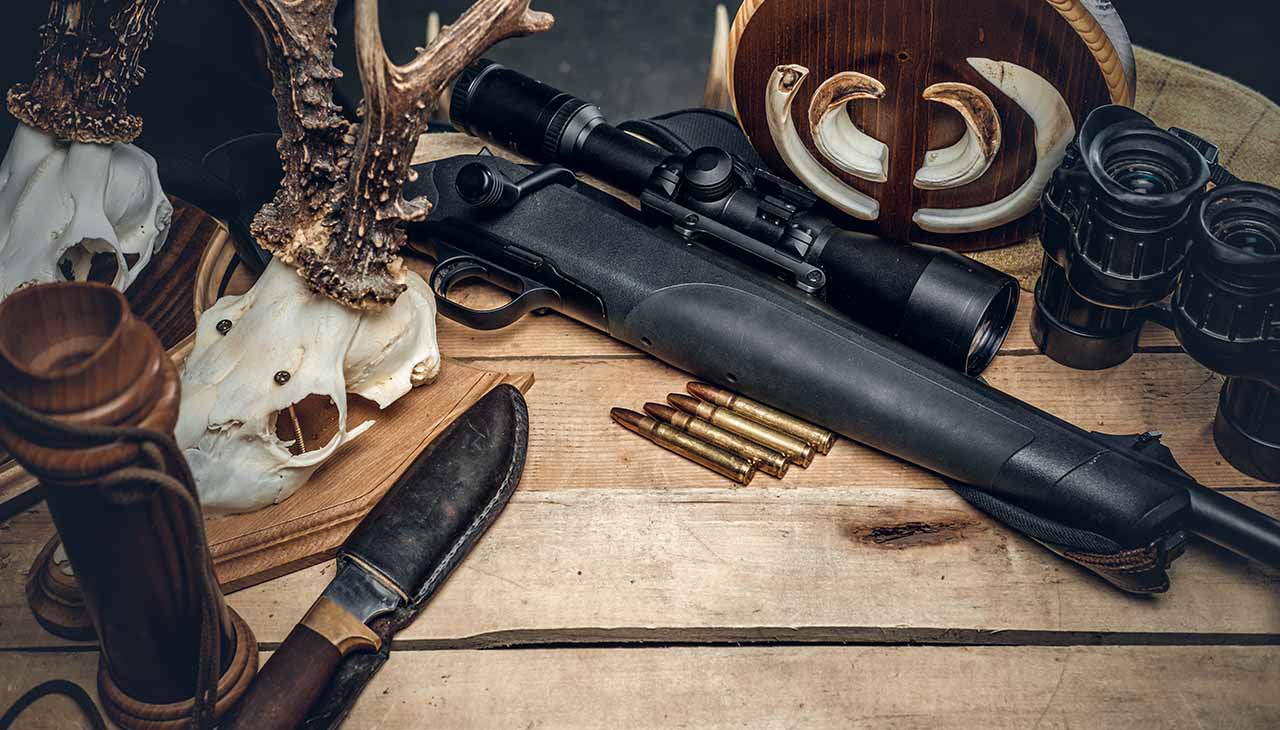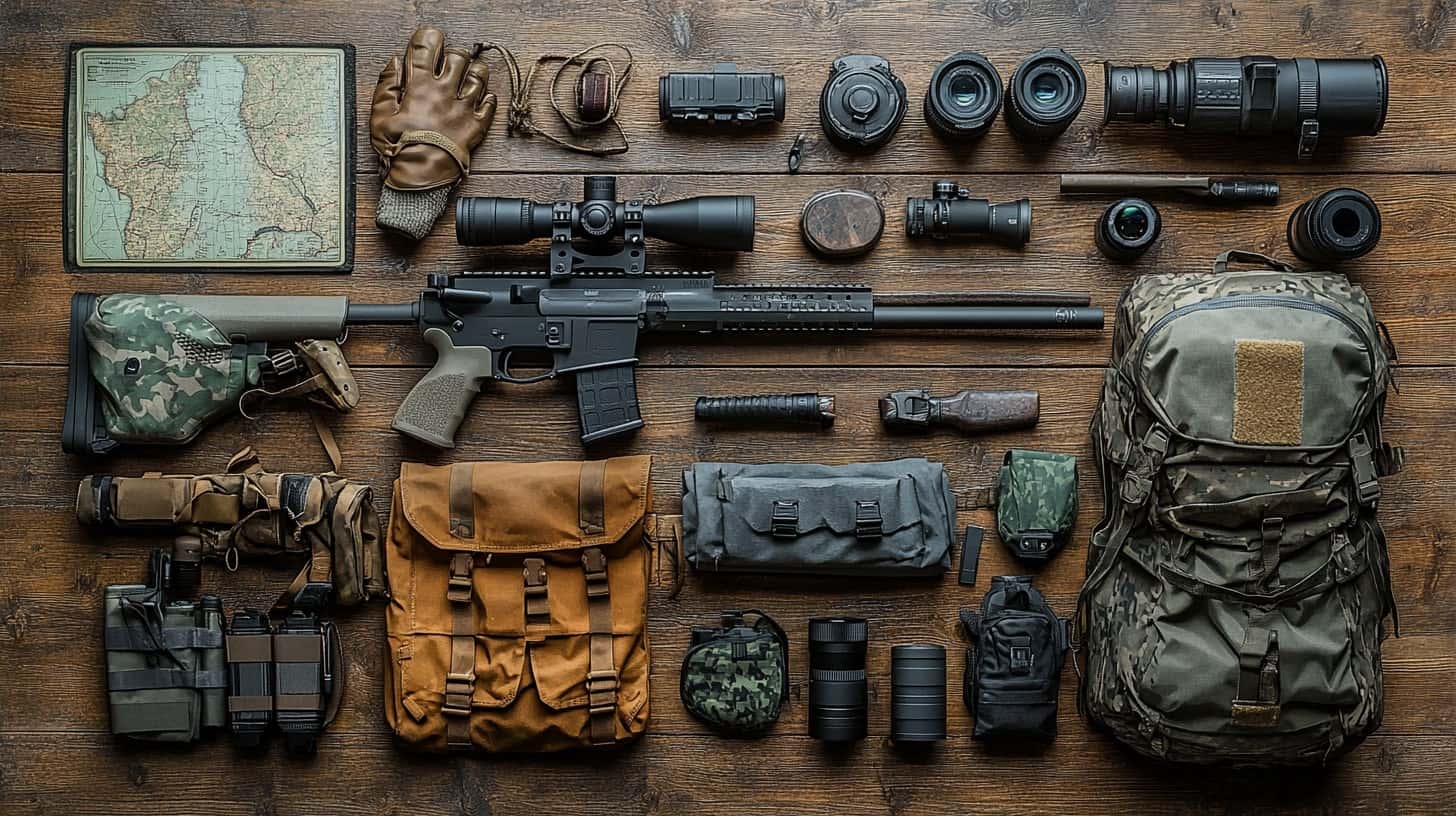The art of hunting has been a fundamental aspect of human history, serving not only as a means for survival but also as a rite of passage in many cultures. Over centuries, the tools and techniques used in hunting have evolved dramatically, transitioning from simple stone tools to sophisticated equipment that enhances efficiency and safety. In this exploration of the evolution of hunting gear, we will traverse through time, examining how advancements in technology and changes in societal attitudes towards wildlife conservation have shaped the modern hunter’s arsenal. From the primitive bow and arrow to the modern GPS and digital mapping technologies, this journey offers a fascinating insight into how innovation has forever altered the landscape of hunting.
Traditional Hunting Gear
Traditional hunting gear, comprising primarily of tools such as the bow and arrow, spears, and traps, was crafted from natural materials found in the hunter’s immediate environment. The bow and arrow, an iconic symbol of early hunting, allowed hunters to target game from a distance, increasing their chances of a successful hunt while minimizing personal risk. Spears, crafted from sturdy wood and sharpened with stone or bone tips, were used for close-quarters combat with larger prey. Traps, cleverly designed to capture or kill without the need for constant human supervision, showcased early hunters’ ingenuity and deep understanding of animal behavior.
The role of traditional gear in early hunting societies extended beyond mere survival; it was deeply woven into the social fabric and identity of communities. Mastery of these tools was often seen as a rite of passage, a step into adulthood and a contributor to the social standing within the group. Successful hunters were revered, not only for their skill and courage but also for their role in providing food, clothing, and other resources derived from the game.
Culturally, traditional hunting gear held significant symbolic value, often featured in rituals, storytelling, and art. These tools were not merely utilitarian objects but were imbued with spiritual significance, believed to possess the essence of the animals they captured and the earth from which they were crafted. This deep respect for nature and the animals hunted was reflected in many hunting traditions, emphasizing the importance of balance, conservation, and gratitude. The evolution of hunting gear, therefore, is not just a tale of technological advancement but a reflection of humanity’s complex relationship with nature and the animals that inhabit it.
Technological Advancements in Hunting Gear
The transition from traditional to modern hunting gear marked a significant milestone in the history of hunting, fundamentally altering the dynamics of the hunt and the relationship between humans and wildlife. The introduction of firearms in the 14th century revolutionized hunting, providing hunters with a new level of power, range, and accuracy. Early firearms were cumbersome and unreliable; however, their ability to kill from a distance fundamentally changed hunting strategies and increased the efficiency of hunts.
This era also saw the development of specialized hunting equipment, as innovations in materials science and engineering allowed for more sophisticated designs. Modern bows and arrows became lighter, more durable, and more accurate, thanks to the adoption of synthetic materials and advanced manufacturing techniques. Traps evolved with more humane designs, minimizing suffering for captured animals and reflecting a growing awareness of animal welfare issues.
The advent of firearms and specialized equipment significantly expanded the capabilities of hunters, allowing for more successful hunts with fewer risks. However, it also led to concerns about overhunting and the impact on wildlife populations, ushering in a new era of wildlife conservation and management. The development of hunting gear, from simple stone tools to high-tech equipment, mirrors humanity’s technological progress and changing attitudes toward nature and conservation.
The Rise of High-Tech Hunting Gear
In the latest chapter of hunting gear evolution, cutting-edge technologies have further revolutionized the way hunters track and harvest game, merging traditional skills with modern innovation for unprecedented efficiency and effectiveness. Advanced optics, such as high-resolution binoculars and range finders, equip hunters with the ability to spot and evaluate their prey from great distances with astonishing clarity. Night vision and thermal imaging technologies have also opened up the possibility of hunting at night, revealing a previously invisible world and allowing hunters to track nocturnal species with ease.
GPS tracking and other digital tools have transformed the hunter’s approach to tracking and navigation. Handheld GPS devices and smartphone apps can mark trails, log waypoints, and even trace the movement patterns of game, ensuring that hunters can explore and hunt in unfamiliar territories without the fear of getting lost. Furthermore, these digital aids integrate with online databases and weather forecasting tools, providing hunters with real-time information on game activity, weather conditions, and the best times for hunting.
These advancements in hunting gear not only enhance the hunter’s capacity to locate and harvest game but also contribute to safer and more ethical hunting practices. By employing precise technology, hunters can ensure more accurate shots, reducing the likelihood of wounding animals and promoting quicker, more humane harvests. The integration of high-tech gear in hunting represents not just an evolution in the tools of the trade but reflects a broader shift towards sustainable and responsible wildlife management and conservation practices.
Impact on Hunting Culture
The proliferation of high-tech hunting gear has not only changed the landscape of hunting practices but has also stirred significant debates about ethics and environmental conservation. Traditional hunting, which relied heavily on skill, patience, and an intimate knowledge of nature, has been transformed by technology that can potentially tilt the balance overwhelmingly in favor of the hunter. This shift raises ethical questions about fair chase and respect for wildlife. Critics argue that the use of advanced technologies, such as drones for scouting or electronic calls to lure animals, may undermine the spirit of hunting and disrupt the natural balance between predator and prey.
On the flip side, proponents of modern hunting gear advocate for its role in promoting responsible and efficient hunting practices. They highlight how technology, such as precise range finders and ethical shot placement aids, can vastly reduce animal suffering by ensuring more accurate and humane kills. Furthermore, technological innovations in hunting gear have played a pivotal role in environmental conservation efforts. For instance, the data collected via GPS tracking and wildlife monitoring technologies has become invaluable for wildlife management and research, aiding in the conservation of species and habitats.
Thus, as hunting gear continues to evolve, the hunting community finds itself at a crossroads. The challenge lies in balancing the use of technology with the maintenance of traditional hunting ethics and the overarching goal of conservation. This ongoing debate underscores the need for thoughtful consideration of how technological advancements are incorporated into hunting practices and how they impact not just the hunter-prey dynamic but the broader ecological system.



